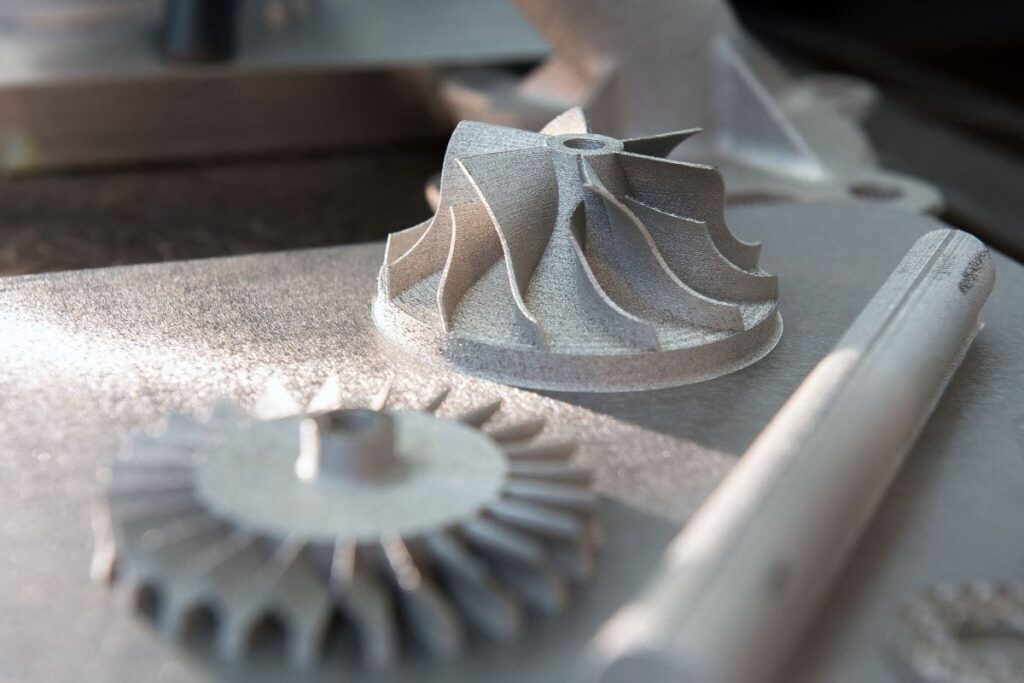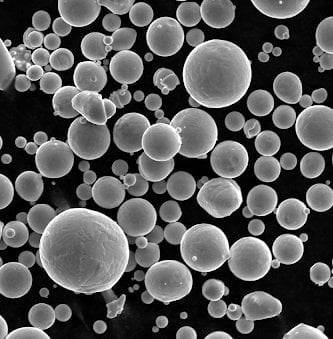3Dプリンティング用440Cステンレス鋼粉末:包括的ガイド
目次
概要
440Cステンレス鋼はマルテンサイト系ステンレス鋼で、卓越した強度、硬度、耐摩耗性で知られている。近年、440Cステンレス鋼粉末は、3Dプリンティング、特に高性能部品を必要とする業界で大きな人気を博している。この記事では、3Dプリンティング用440Cステンレス鋼粉末の世界を掘り下げ、その特性、用途、仕様、サプライヤーなどを探ります。

440Cステンレスパウダー 種類、組成、特性
| プロパティ | 説明 |
|---|---|
| 構成 | 440Cステンレス鋼粉末の主成分は鉄、クロム、炭素、モリブデンである。 |
| 硬度 | 440Cステンレス鋼粉末は、熱処理後に58~62HRCの優れた硬度を示します。 |
| 強さ | 一般的に約1,200MPaの高い引張強度と約1,000MPaの降伏強度を持つ。 |
| 耐摩耗性 | 440Cステンレス鋼粉末は、その高い硬度と熱処理中のクロム炭化物の形成により、優れた耐摩耗性を発揮する。 |
| 耐食性 | オーステナイト系ステンレス鋼ほど耐食性は高くないが、440Cステンレス鋼粉末は中程度の耐食性を持つ。 |

440Cステンレスパウダー アプリケーション
440Cステンレス鋼粉末は、以下のような様々な産業で使用されている:
| 産業 | アプリケーション |
|---|---|
| 航空宇宙 | タービンブレード、着陸装置部品、構造部品 |
| 自動車 | ギア、シャフト、その他の高摩耗部品 |
| メディカル | 手術器具、インプラント、歯科器具 |
| 石油・ガス | 過酷な環境にさらされるバルブ、ポンプ、その他の部品 |
| 工具 | 切削工具、金型 |
仕様、サイズ、グレード
440Cステンレス鋼粉末は、様々な仕様、サイズ、等級で提供されています。一般的な仕様は以下の通り:
| 仕様 | 説明 |
|---|---|
| ASTM A666 | ステンレス鋼粉末冶金構造部品の標準仕様 |
| ISO 3091 | ステンレス鋼粉末冶金材料の国際規格 |
| MPIFスタンダード35 | 積層造形に使用される金属粉末の規格 |
440Cステンレス鋼粉末のサイズは、通常15~150ミクロンである。440Cステンレス鋼粉末のグレードは以下の通りです:
| グレード | 説明 |
|---|---|
| 440C | 強度、硬度、耐食性のバランスのとれた標準グレード |
| 440C改 | 耐食性と靭性を向上させた改良グレード |
| 440Cハイカーボン | 硬度と耐摩耗性を高めるため、炭素含有量を高めたグレード |
440Cステンレス鋼粉末の価格は、サプライヤー、数量、粒度などの要因によって異なります。一般的には、1キログラムあたり$50から$200です。
長所と短所
| 長所 | 短所 |
|---|---|
| 卓越した強度と硬度 | オーステナイト系ステンレス鋼に比べて耐食性が低い。 |
| 優れた耐摩耗性 | 適切に熱処理しないと水素脆化しやすい |
| 様々な産業で多用途に使用可能 | 他のステンレス鋼粉末より高価な場合がある |
よくあるご質問
| 質問 | 答え |
|---|---|
| 440Cと他のステンレス鋼種との違いは何ですか? | 440Cステンレス鋼は、他の鋼種よりも炭素含有量が高く、硬度と耐摩耗性が向上している。 |
| 440Cステンレス鋼粉末は、すべての3Dプリントプロセスに適していますか? | 440Cステンレス鋼粉末は、主にレーザー粉末床溶融法(LPBF)および電子ビーム粉末床溶融法(EBPBF)で使用される。 |
| 440Cステンレス鋼粉末の耐食性を向上させるには? | 熱処理および窒化や不動態化などの表面処理 は、440Cステンレス鋼粉末の耐食性を高める ことができる。 |
| 440Cステンレス鋼粉末の代表的な用途は? | 440Cステンレス鋼粉末は、航空宇宙産業、自動車産業、医療産業、石油・ガス産業、工具産業で一般的に使用されている。 |
| 440Cステンレス鋼粉末の正しいサプライヤーを選ぶには? | サプライヤーを選択する際には、サプライヤーの評判、製品の品質、価格、技術サポートなどの要素を考慮する。 |
結論
440Cステンレス鋼粉末は、強度、硬度、耐摩耗性のユニークな組み合わせを提供し、様々な産業における高性能コンポーネントの3Dプリントに理想的な選択肢となります。その汎用性と適応性により、技術革新の限界を押し広げようとするエンジニアや製造業者にとって貴重な素材となっています。
シェアする
フェイスブック
ツイッター
LinkedIn
WhatsApp
電子メール
MET3DP Technology Co., LTDは、中国青島に本社を置く積層造形ソリューションのリーディングプロバイダーです。弊社は3Dプリンティング装置と工業用途の高性能金属粉末を専門としています。
関連記事
Met3DPについて
最新情報
製品

3Dプリンティングと積層造形用金属粉末









